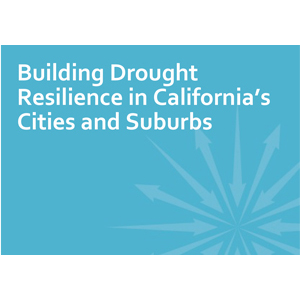With the recurrence of droughts and the recent protracted drought in California, the Public Policy Institute of California (PPIC) issued a report in June titled Building Drought Resilience in California’s Cities and Suburbs (Report). The Report, supported with funding from California Water Service (Cal Water), the S.D. Bechtel, Jr. Foundation, and the U.S. Environmental Protection Agency, took a comprehensive look at the response of California’s cities and suburbs to recent droughts and the state’s evolving role in urban drought management.
After the droughts of 1976-77 and 1987-92, water utilities made considerable investments to prepare for continued drought resilience, including diversifying supplies, creating connections with neighboring suppliers and engaging in recycled wastewater and water transfer agreements. In light of this, water utilities generally believed they were prepared for the 2012 drought.
Throughout the drought years, the state played a significant role in strengthening local water planning requirements and providing financial assistance while facilitating voluntary water trading to help areas in dire need. However, with the 2012 drought, the state took a stronger role in managing short-term water demands, which typically had been the responsibility of local authorities, and in 2015, implemented a statewide policy mandating water conservation.
Based on numerous information sources on the impact of drought on urban communities and the actions taken by state and local authorities to mitigate that impact, the Report sheds light on some lessons learned for planning and managing future droughts. The Report emphasizes the importance of state and local water suppliers “aligning policies and expectations regarding each other’s roles and responsibilities.” According to the Report, the key lessons learned from the drought relative to urban drought planning and response are largely due to understanding how the state and local water suppliers can best work together in five key areas, including:
- Coordinating water shortage contingency planning and implementation
- Fostering water system flexibility and integration
- Improving water suppliers’ fiscal resilience
- Addressing water shortages in vulnerable communities and ecosystems
- Balancing long-term water-use efficiency and drought resilience
To support the examination, Cal Water provided data and insight into its approach to managing the recent historic drought. Specifically, Cal Water gave the research team detailed information on water use by its customers in all 24 of its operating districts (which serve nearly 2 million Californians and stretch from Chico in northern California to Ranchos Palos Verdes in southern California), with a comparative analysis covering different customer classes, including single-family households, during both the voluntary conservation and mandatory reduction phases of the statewide effort to reduce water use.
Ken Jenkins, Cal Water Director of Drought Management and Conservation, noted in a press release, “Cal Water customers did a remarkable job conserving water during the recent, historic drought, and it’s imperative that we retain the excellent habits our customers and other Californians developed. At the same time, PPIC’s report identifies additional measures that should be considered to ensure we are prepared for future droughts.”





